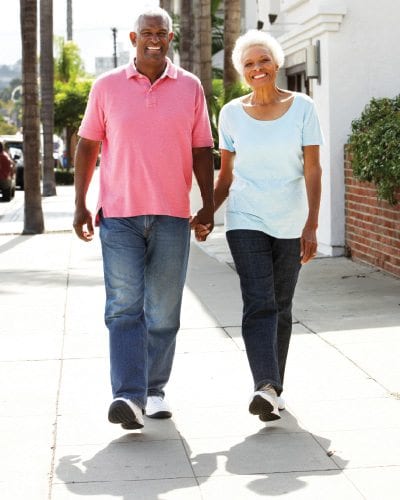
The 2008 Physical Activity Guidelines for Americans recommends 150 minutes — or 30 minutes a day for five days — of moderate-intensity aerobic exercise a week for adults. That sounds like a lot, but if you break it into smaller chunks of 10 minutes a few times a day for several days, it’s more doable.
Walking is one of the easiest — and least expensive — activities you can do to improve your health. Just put one foot in front of the other … and keep going.
When you consider the benefits of walking, it’s well worth it. Walking decreases the risk of heart disease and stroke, diabetes and osteoporosis, or bone weakness. It improves levels of blood pressure, blood sugar and cholesterol. It helps maintain body weight and reduces the risk of obesity. Also, it just makes you feel good.
That’s an awful lot for such a simple activity.
If you cannot reach 150 minutes a week, just do what you can. Every step helps.
Looking for a walking buddy? Visit mywalkingclub.org, a program of the American Heart Association.
How to choose walking shoes
The only expense to walking is a pair of comfortable walking shoes. Bottom line is whatever shoe you walk in should have a comfortable fit. It should be snug but have enough room for you to wiggle your toes. Here are some tips when choosing walking shoes.
- Pick up the shoe by the heel and toe and bend the toe upward. The shoe should bend under the ball of the foot.
- Twist the shoe from the heel to the toe. There should be some resistance.
- Walk down an incline. If your toes can touch the front inside of the shoes, they are not a good fit. There should be about a half inch between your longest toe and the end of the shoe.
- Walk up a few flights of stairs, two stairs at a time. Check for heel lift. If your heels keep lifting off the insoles more than about 1/8 of an inch, chances are the shifting will eventually result in a heel blister.
- Go shoe shopping at the end of the day when your feet may be slightly swollen. Try on both shoes since one foot can be larger than the other. Also wear the same socks you will be wearing during your walks.
Source: Suggestions from REI







